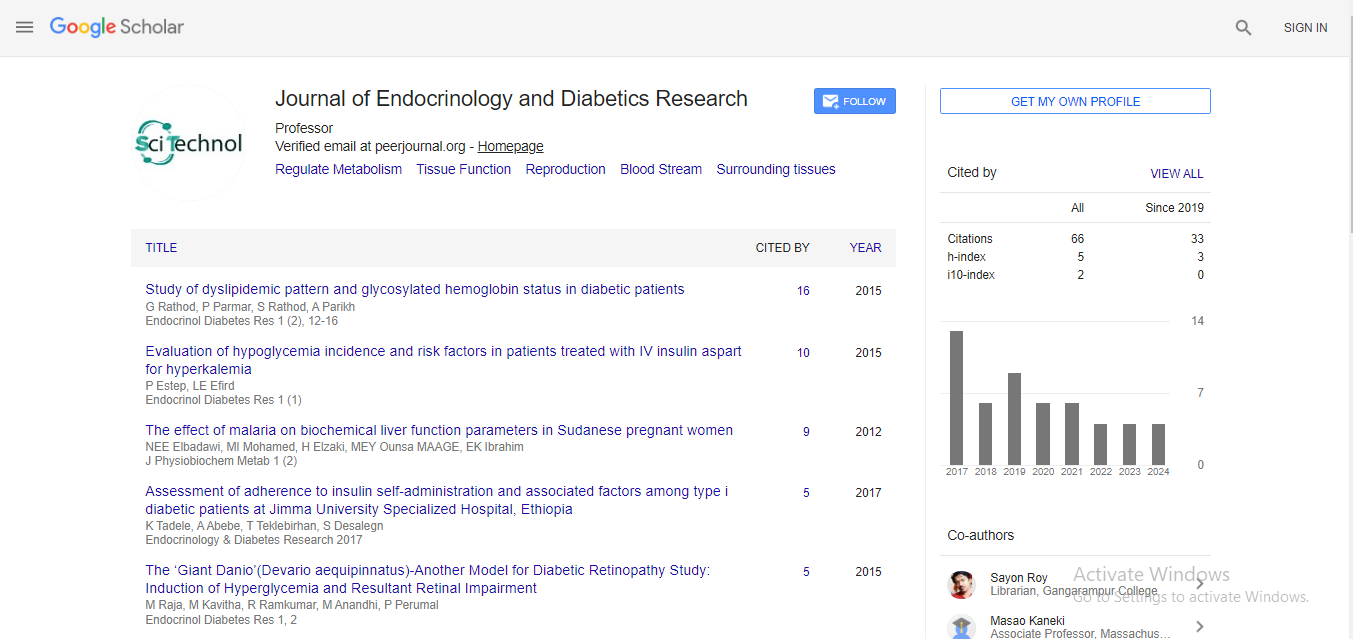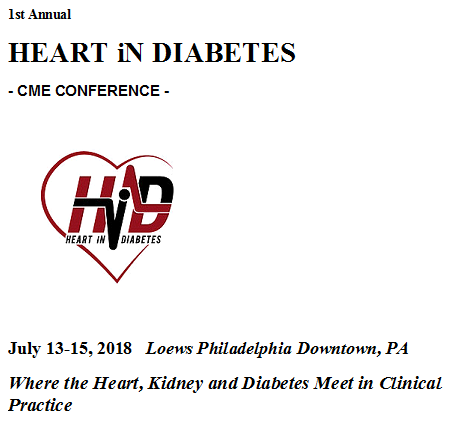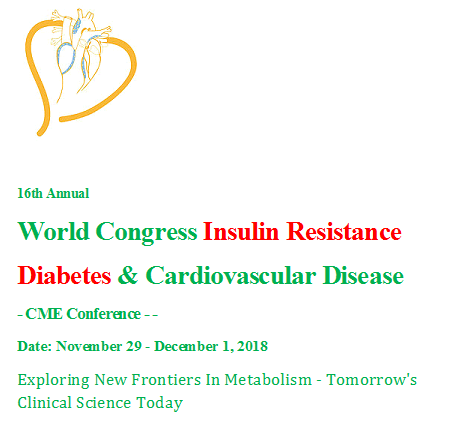Hispidulin is an insulin secretagogue targeting the AKAP9-mediated PKA signaling pathway
Abdul Hameed, Kohichi Matsunaga and Tetsuro Izumi
Ziauddin University, Pakistan Gunma University, Japan
: Endocrinol Diabetes Res
Abstract
Background and objective: Inadequate insulin secretory impairment in response to high glucose is considered predominant in Asian non-obese type 2 diabetic subjects. Hispidulin, a natural flavone, was identified as a new insulin secretagogue that enhances insulin secretion in response to high glucose and seems a better drug candidate than synthetic marketed drugs. Here, we explored the insulinotropic mechanism(s) of hispidulin. Materials and methods: Secreted insulin and intracellular cAMP contents from batch-incubated C57BL/6 J mice islets and INS-1 832/13 cells were measured using an AlphaLISA kit. Preparation of hispidulin-immobilized beads and affinity purification with hispidulin-immobilized beads were performed. INS-1 832/13 β-cells were transfected with the AKAP-9 siRNA or scrambled siRNA using Lipofectamine RNAiMAX reagent. AKAP-9 knockdown was confirmed by western blotting. Results: Hispidulin showed insulin secretory potential in INS1832-13 cells and isolated mice islets in response to high-glucose. Hispidulin showed no effect on intracellular cAMP concentration; however, showed an additive effect in both forskolin and IBMX-induced insulin secretion. Among the inhibitors of major signaling pathways, H89, a PKA inhibitor, completely inhibited hispidulin-induced insulin secretion. Hispidulin showed a strong binding affinity with A-kinase anchoring protein 9 (AKAP-9). Interestingly, in AKAP-9 knock down β-cells, hispidulin-mediated glucose-induced insulin secretion was further amplified. Furthermore, it was also observed that the intracellular PKA signaling was further increased using hispidulin alone and AKAP-9 knockdown β-cells. Conclusion: Hispidulin increases intracellular PKA concentration and inhibits the negative regulation of AKAP-9-cAMP-PKA signalosome, enhancing glucose-induced insulin secretion. The promising glucosedependent insulin-releasing mechanism makes hispidulin a potential anti-diabetic drug candidate. Keywords: hispidulin, Insulin secretion, Mice islets, Protein kinase A, Phosphodiesterase.
Biography
Abdul Hameed is affiliated to 1Department of Molecular Medicine, Ziauddin University, Karachi, Pakistan. He is a recipient of many awards and grants for his valuable contributions and discoveries in major area of diabetes research. His international experience includes various programs, contributions and participation in different countries for diverse fields of study. His research interests reflect in his wide range of publications in various national and international journals.
 Spanish
Spanish  Chinese
Chinese  Russian
Russian  German
German  French
French  Japanese
Japanese  Portuguese
Portuguese  Hindi
Hindi 


